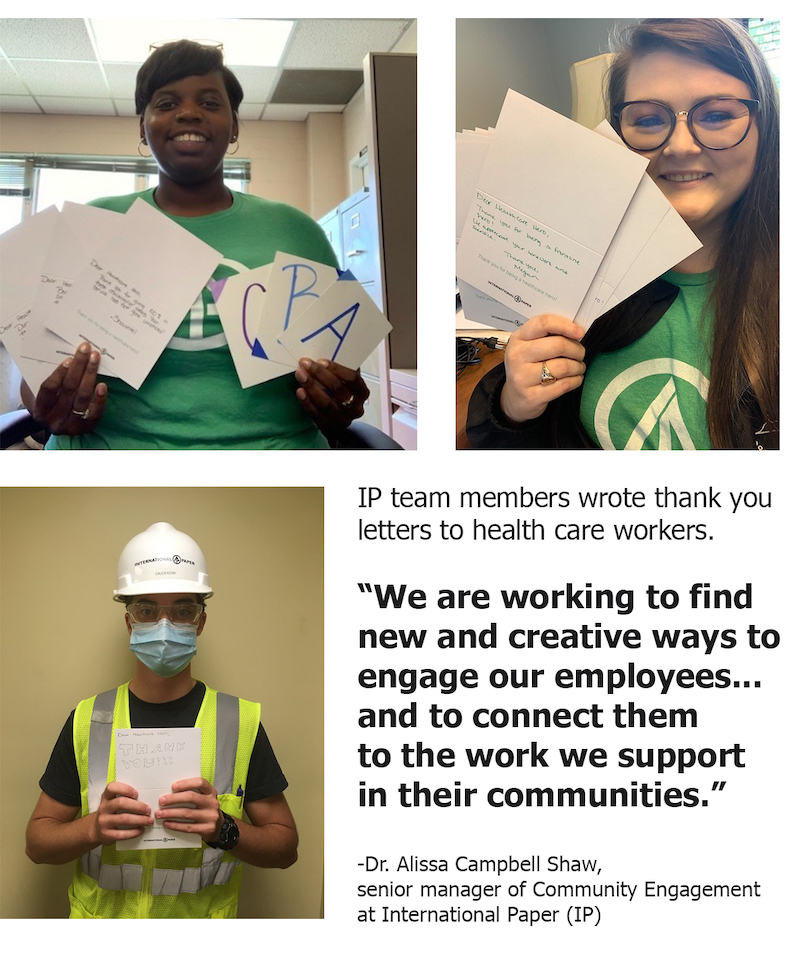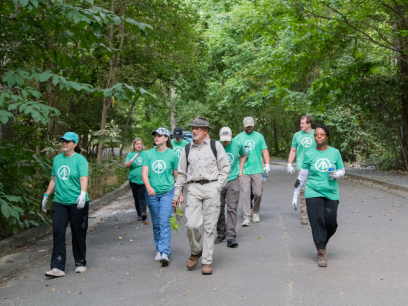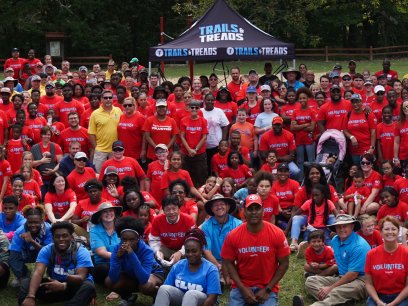
Considering how much of our time is spent with them each week, our coworkers can sometimes feel like a second family, providing us with much-needed support and a sense of belonging to something greater than ourselves. The best organizations foster this attitude and build it into their hiring practices when looking for new team members that will slot seamlessly into their existing office environment.
But what happens when that environment is taken away, and the family you have spent so many workdays with is reduced to a handful of boxes on a computer screen? How would that change your relationship with the work you do every day?
A Worldwide Employee Engagement Crisis
The tremendous impact of the COVID-19 pandemic cannot be overstated. Setting aside the (albeit massive) implications for public health, the business world is still struggling to adjust to seismic changes brought on by the abrupt pandemic lockdowns of early 2020. According to the Society for Human Resource Management (SHRM), over 7 in 10 employers said adjusting to remote work during COVID-19 has been a challenge, with 2 in 3 citing low employee morale—especially those organizations with 500 employees or more.
An unfortunate side-effect of necessary and lifesaving social distancing protocols has been an almost complete dissolution of the typical office environment—and the sense of camaraderie and engagement that comes with working among your peers.
Dr. Alissa Campbell Shaw, senior manager of Community Engagement at International Paper (IP) (pictured at right), a leading producer of renewable fiber-based packaging, pulp, and paper, felt this impact firsthand.
“At International Paper, we say that we’re a force for good in the communities where our employees live and work. Our employees take this to heart and bring this commitment to life through volunteering,” said Shaw. “Our typical methods for reaching out to our communities and engaging with our employees changed drastically as the realities of the pandemic set in. Understanding and working with the limitations COVID imposed enabled us to think creatively about how to help them be that force for good.”
Shining a Spotlight on Hourly Employees
Thanks to a previous partnership between International Paper and the National Environmental Education Foundation (NEEF), the company was well-equipped to tackle the challenge of this worldwide employee engagement crisis.
“Shortly after I began working at IP in 2017, my colleagues told me about the NBA Green Energy All-Star campaign, which encouraged fans to save money and energy by taking small steps toward being more environmentally responsible in their daily lives,” said Shaw. “That was my first introduction to NEEF.”
At the time, Shaw was working on a framework for increasing employee engagement and satisfaction for hourly employees. While International Paper had an existing employee engagement program, it was mainly geared towards salaried employees.
“International Paper has a strategic framework that we call The IP Way Forward, and one pillar of this framework is ‘Investing in People,’” said Shaw. “Driven by that commitment, NEEF helped us identify a unique opportunity to advance the employee engagement field by identifying and piloting promising strategies for engaging hourly employees—who make up a significant portion of our workforce—in sustainability initiatives including social and environmental education.”
While many corporate sustainability programs focus on educating and engaging salaried employees, the SHRM suggests that engaging hourly employees is equally important when it comes to job satisfaction and retention. It has even been shown to influence overall consumer experience as well.
Creating a culture where hourly employees understand how their work contributes to the company’s success and feel that those contributions are recognized and rewarded can foster loyalty and more positive working relationships.
With this in mind, International Paper and NEEF worked together to design and pilot engagement strategies for hourly employees with the goal of building a model for sustainability and community engagement in International Paper’s US manufacturing operations.
Engaging Hourly Employees in Sustainability and Community Service
From October 2018 to December 2019, International Paper and NEEF collaborated on a research project to understand the experiences, community interests, and local environmental issues important to International Paper’s hourly employees.
The project included data collection from hourly employees at four International Paper pilot sites—two paper mills, one box plant, and one recycling collection center. These sites were selected based on multiple criteria, including geographic location, business type, and facility size.
International Paper and NEEF designed and implemented sustainability and/or community engagement activities at each pilot site, using surveys, in-person site visits, and interviews to identify what worked, what didn’t, and what could be improved.
While conducting the project, Shaw and NEEF noticed that specific types of activities influenced manufacturing employee participation and engagement. On-site activities tended to have more participation than off-site activities, and hands-on activities such as volunteering recorded higher engagement than educational activities that did not include a hands-on component.
The timing of activities was also a major factor on employee participation—activities that took place during unpaid time off had less participation than those held during the workday.
Targeted Engagement Campaigns Increase Job Satisfaction
The results of this research project helped Shaw and her team understand the similarities and differences in how employees viewed the company’s signature causes—such as protecting streams and water bodies, as well as promoting education and literacy programming—across different divisions and regions.
Overall, the research project was a big hit with International Paper employees.
“Our hourly employees enjoyed the opportunity to share their voices and ideas to help craft the community engagement strategy for the company’s Vision 2030 goals,” said Shaw. “They also were proud to participate in tangible and focused volunteer opportunities in their own communities.”
Following the project, Shaw and her team incorporated several new strategies—most notably, the removal of barriers to hourly employee participation in community engagement, specifically within International Paper’s North American box plants.
Building on the framework of this successful project, International Paper also partnered with NEEF in September 2019 to provide key funding for several volunteering events near IP facilities on National Public Lands Day, the largest single-day volunteer effort for America’s public lands.
“We engaged with this research to help inform the development of IP’s next generation sustainability goals with respect to community engagement and employee value proposition in a data-driven way,” said Shaw. “The NEEF team is very collaborative, thoughtful, and data-driven. Working with them was a wonderful experience.”
Innovative Employee Engagement Strategies During COVID-19
Like many of their peers in the business world, International Paper’s COVID-19 protocol called for social distancing and the elimination of group gatherings. However, instead of putting their employee engagement program on hold, Shaw’s team reworked their plans to find ways to continue to engage remote and hourly workforces safely during the pandemic.
“My amazing team created and led our Virtual Volunteering programs, which were informed by the work we did with NEEF,” said Shaw.
Virtual volunteering refers to activities completed using an internet-connected device such as a computer, smartphone, or tablet. This type of volunteering gained popularity during the COVID-19 pandemic when social-distancing protocols made it difficult—or impossible—to hold traditional, in-person volunteering events.
The objectives of International Paper’s virtual volunteering programs were both to connect employees with the company’s strategic partnerships, as well as boost morale by engaging those employees and their families during the pandemic.
Of course, as anyone suffering from Zoom fatigue can tell you, that last part is easier said than done.
“Engagement in the traditional sense is a challenge with virtual volunteering,” said Shaw. “In-person volunteering creates a sense of togetherness and community that is difficult—but not impossible—to duplicate virtually.”
To get around this, Shaw and her team used a number of strategies to keep employees engaged. This included developing a variety of virtual volunteering projects that allowed for individual or family participation, as well as providing volunteer kits containing all the required materials, with the goal of reducing barriers to participation.
For example, their “Show Your Community Pride Cleanup” project provided families with a clean-up kit containing a compostable yard waste bag and gloves for collecting debris in local parks, public areas, or storm drains in their neighborhood.
Volunteers also had access to NEEF’s virtual volunteering resources so they could learn more about nearby events at national parks and other nature-focused activities.
“Being a global company and having hourly employees who are not ‘wired’ throughout the workday, we had to look at options that did not require employees to connect via internet or to engage at the same time,” said Shaw. “Shipping out kits to the home or workplace to complete at their convenience was a great solution.”
Shaw and her team also encouraged employees to submit photos of themselves as they “virtually volunteered,” which were then shared through internal communication channels and on social media.

“Our manufacturing employees loved the flexibility of virtual volunteering,” said Shaw. “Lack of flexibility with shift work had often prevented them from volunteering for in-person projects at a specific time and place. With virtual volunteering, they could do a meaningful activity with their families and learn more about the work IP is supporting in their communities.”
IP’s pivot to virtual volunteering was a huge success. The company’s annual “Day of Caring” featured over 1,500 employee volunteers in the United States alone—more than 50% of which were hourly employees—and contributed more than 3,000 volunteer hours total, resulting in an estimated economic impact of $83,000 across International Paper communities.
Ultimately, Shaw viewed the experience as an opportunity to think more creatively about how to meaningfully engage employees.
“We learned that we must prioritize meaningful engagement when coordinating and executing virtual volunteer events. Employees will become disengaged when there is not some component that brings them together for a common purpose—for example: social media engagement, virtual kick-off sessions, or learning sessions with recipient organizations.”
The Future of Employee Engagement Post-COVID
With vaccines readily available in the US and a public desperate for a return to pre-pandemic life, what does International Paper plan to carry forward from their innovative employee engagement program under “normal” working conditions?
For starters, they will continue to include virtual volunteering in their community engagement programming, which serves as invaluable tool for incorporating a wider, more diverse range of people in volunteer activities. It also provides an avenue for engagement to those who may be unable to participate under normal circumstances.
“Employees enjoy the flexibility of virtual volunteering, so we will continue to offer virtual volunteering options in addition to in-person volunteering once it is safe to do so,” said Shaw.
In addition, Shaw and her team will continue to develop employee engagement activities that focus on local communities.
“We are working to find new and creative ways to engage our employees, particularly our manufacturing employees, and to connect them to the work we support in their communities,” said Shaw.
Shaw and her team have big plans for the future of employee engagement at International Paper, including a company-wide, global signature event to bring their employees all over the world together virtually for a common cause.
“I’d also love to bring things down to a personal level and provide our employees with the opportunity to support projects they care about in their communities,” said Shaw. “It would be a big boost for driving more grassroots, employee-led engagement.”
How Your Business Can Master Employee Engagement Strategy
For organizations out there looking to strengthen their current employee engagement programs—or start completely from scratch—Shaw says the first step is making sure everyone in your organization is onboard.
“If you have a small Community Engagement team like ours, it is critically important to build relationships throughout the company,” said Shaw. “Our network of community liaisons are able to help drive engagement locally and at a team level.”
One method for securing buy-in and driving engagement is to utilize your organization’s existing employee interest groups if you have them. International Paper created specialized groups called Employee Networking Circles to provide employees with opportunities to connect across physical locations. There are circles for LGBTQ+ employees and allies, veterans of the armed forces, African-American employees, and so on.
“These networks are critical for implementing and sustaining employee engagement by mobilizing people across the company,” said Shaw.
In the end, it comes down to understanding your employees and what they value.
“Employees will become disengaged when there is not some component that brings them together for a common purpose,” said Shaw. “By providing meaningful and interactive virtual volunteer projects, we were able to help volunteers feel as though they were contributing to a common goal, which connected them through the shared sense of pride that comes from giving back to their community.”
Interested in collaborating with NEEF on an employee engagement campaign at your organization? Contact our team today!

